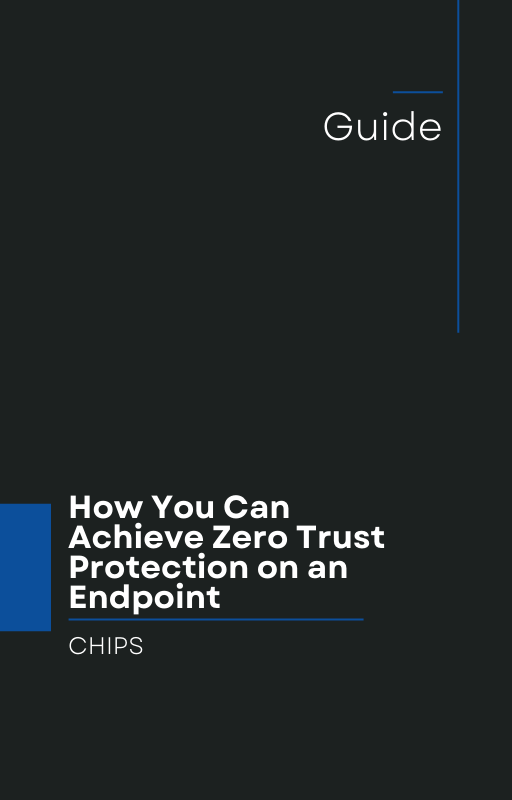The ransomware epidemic is far from over—and that’s not just because attackers are getting smarter. As highlighted in The Register's recent opinion piece, the real issue lies not with the attackers themselves, but with our outdated approach to cybersecurity.
Too many organizations continue to treat ransomware as a disease to be detected and removed after the infection begins. This “Detect and Respond” model has become the standard across the industry, but it’s increasingly clear that it’s no longer enough—if it ever was.
“Ransomware is not the sickness, it’s the symptom,” the article argues—and it’s spot on.
At CHIPS, we see this every day. Organizations install sophisticated endpoint detection and response (EDR) tools, threat hunting platforms, and managed detection services, yet they still fall victim to ransomware. Why? Because by the time a threat is detected, it’s often already too late.
Ransomware Is Faster Than You Think
Modern ransomware can encrypt entire systems in minutes. In some cases, initial compromise to full encryption occurs within 15 minutes. Even the best threat detection tools struggle to respond that fast, let alone stop the attack before damage is done.
What’s worse: these tools depend on known threat indicators or behavioral anomalies to flag suspicious activity. But threat actors are evolving just as quickly—if not faster—using obfuscation, fileless malware, zero-day exploits, and even AI-generated malware to bypass traditional detection mechanisms.
The result? Organizations spend millions on cybersecurity solutions and still end up negotiating with ransomware gangs or dealing with the fallout of a breach.
We Don’t Need Faster Detection—We Need Prevention
What if we stopped trying to “catch the bad guys” and focused instead on making sure they can’t do anything, even if they break in?
That’s the foundation of AppGuard—a battle-tested endpoint protection solution with a 10-year track record of stopping ransomware, zero-days, and fileless malware without relying on detection.
AppGuard uses patented Isolation and Containment technology to stop malware from executing harmful actions—regardless of whether it’s known or unknown. It assumes that breaches are inevitable but renders those intrusions harmless by blocking malicious behaviors before they can cause damage.
-
Malicious scripts are contained.
-
Unauthorized process launches are blocked.
-
Lateral movement is neutralized.
-
No alerts to chase. No damage to clean up.
This isn’t theory—it’s been proven over a decade in classified environments, and it’s now available for commercial use.
The Future of Cybersecurity is Prevention First
The Register’s article correctly states that ransomware is a symptom of deeper security failures. We agree—and we believe the cure isn’t found in bigger budgets or more alerts. It’s found in rethinking the way we protect endpoints altogether.
It’s time to move past the reactive “Detect and Respond” model and embrace a proactive strategy: Isolation and Containment. That’s how we break the cycle.
Talk to CHIPS today about how AppGuard can protect your business.
Let us show you how AppGuard’s approach to containment can stop ransomware and other advanced threats before they cause harm. Don't wait until your organization becomes the next headline.
About CHIPS:
CHIPS helps businesses safeguard their digital operations by implementing proven, advanced cybersecurity solutions like AppGuard. We advocate for smarter, prevention-first strategies that protect systems and data from evolving threats.
Like this article? Please share it with others!

July 7, 2025

Comments